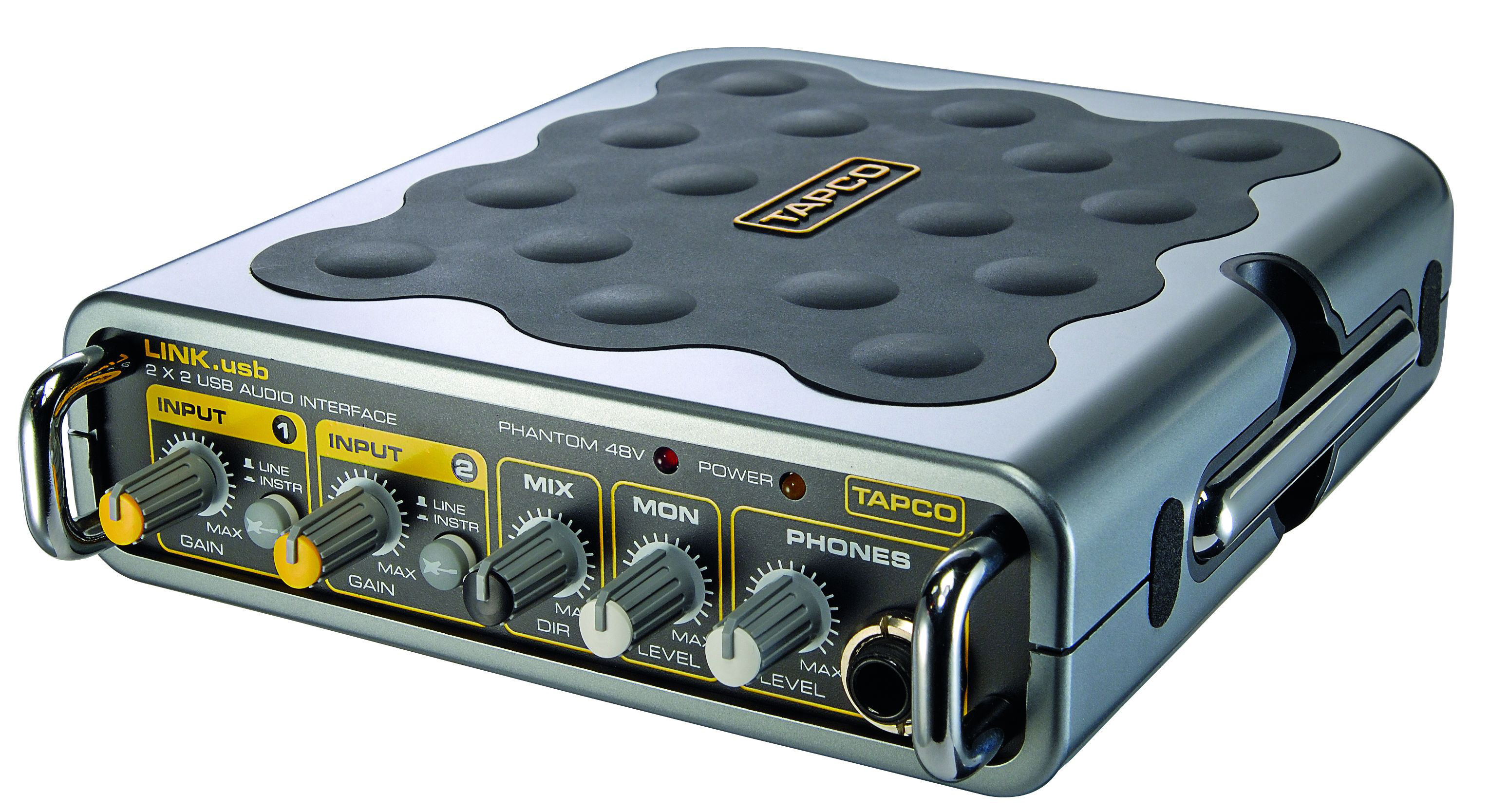MusicRadar Verdict
If you want a well-built interface and great software, the Link.USB is well worth considering.
Pros
- +
Looks good. Sounds great. Simple to use. Sturdy design. Bundled software is a bonus.
Cons
- -
May be too simple for some. The built-in stand can pinch your hands if you’renot careful!
MusicRadar's got your back
As the name suggests, the Tapco Link.USB is an audio interface that connects to your computer via the magic of USB.
The unit itself is a fairly unexciting beast - it´s basically a no-frills 2-in/2-out affair - but the styling alone is enough to make it stand out from the crowd. Looking like something Ripley might hit an Alien over the head with, the Link.USB´s chunky, quasi-militaristic design makes it more striking than many of its bland-looking peers.
While pictures of the Link.USB make it look like it´s built like a brick and could be rather heavy, it´s actually pretty small and light in real life. It´s rugged enough for gigging and general music-making on the go, but we wouldn´t recommend chucking it about, as it´s made mostly from plastic (albeit with some sensual moulded rubber on the top and bottom).
The back of the unit hosts dual quarter-inch jack and XLR inputs, and these can be individually toggled between line and instrument levels via two small knobs on the front panel (located next to each input´s gain knob). The outputs are also quarter-inch jacks, and the only other back-panel furniture is a phantom power switch and a USB port.
Controls
As well as the input controls, the front panel has separate volume controls for the headphone and main outputs, and a Mix control that enables you to mix in the direct input with the signal coming out of your computer. This is a useful feature for those who want to record instruments or vocals Get a grip: some may find the knobbly rubber bits strangely exciting… with the unit; indeed, we can see this being a popular interface among musicians who want to do such things with the minimum of fuss.
The software side of the Link.USB is practically non-existent. The ASIO driver is one of the simplest we´ve ever seen, offering six progressively longer latency times and not a lot else. There are no routing or mixer controls to speak of, but this only enhances the Link.USB´s core concept. It´s extremely easy to use, and the technophobic will find its hand-on, hardware-centric approach to be very appealing.
Want all the hottest music and gear news, reviews, deals, features and more, direct to your inbox? Sign up here.
Thanks to the inclusion of the Tracktion 2 software, the Link.USB is a great choice for those who want a cost-effective all-in-one recording solution. The bundle isn´t such great value if you´ve already got a sequencer, but it remains a well designed, no-frills audio interface that sounds great and is extremely easy to use.
MusicRadar is the number 1 website for music makers of all kinds, be they guitarists, drummers, keyboard players, djs or producers...
GEAR: We help musicians find the best gear with top-ranking gear round-ups and high- quality, authoritative reviews by a wide team of highly experienced experts.
TIPS: We also provide tuition, from bite-sized tips to advanced work-outs and guidance from recognised musicians and stars.
STARS: We talk to musicians and stars about their creative processes, and the nuts and bolts of their gear and technique. We give fans an insight into the actual craft of music making that no other music website can.

